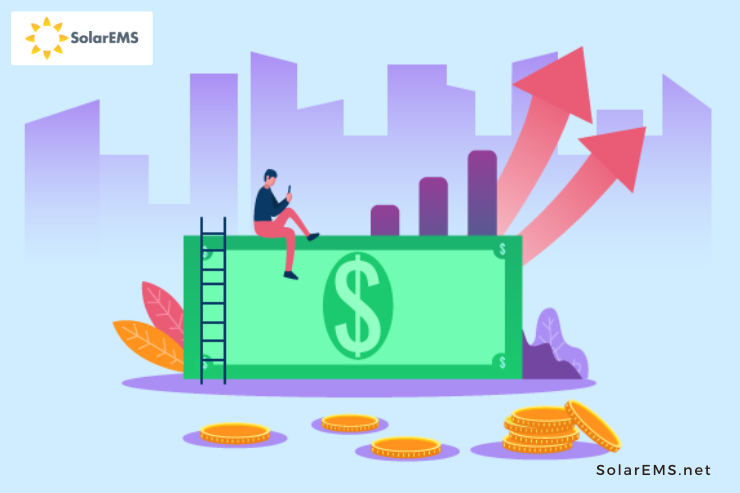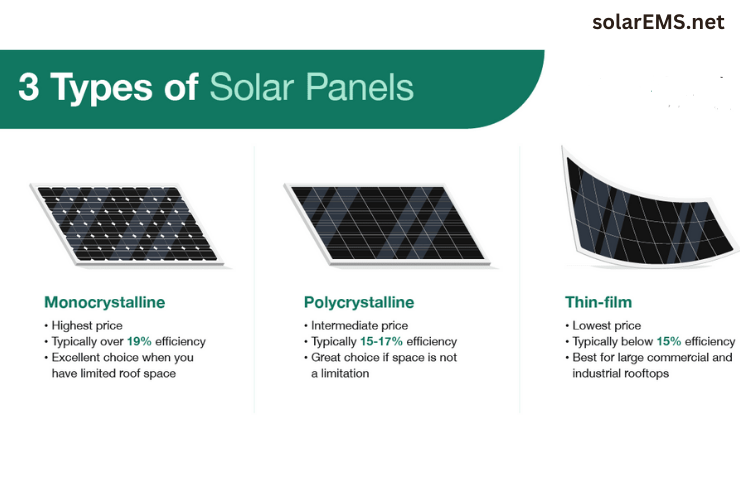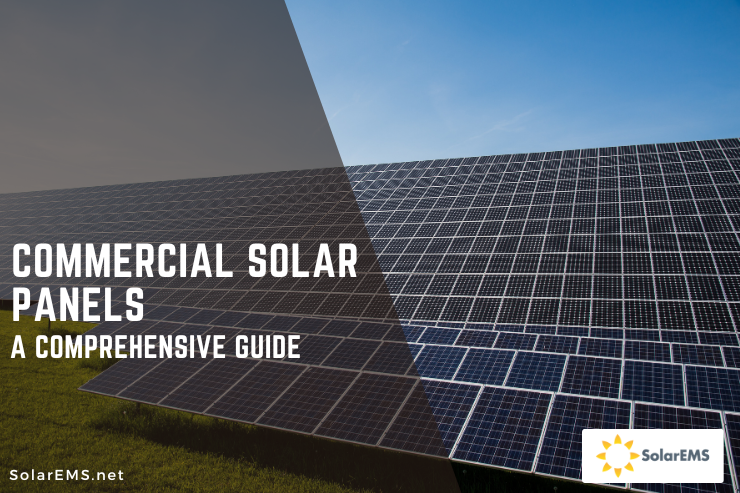With the rising electricity bills and business expenses, if we are still worried about how to reduce them, then commercial solar panels can be the right choice. They are sustainable and also help in saving from maintenance and overhead expenses. In this article, we’ll go through the details about commercial solar panels, benefits, types, factors to consider, installation process, financing options, and much more.
Explanation Of Commercial Solar Panels
Commercial solar panels are a large number of solar panels joined in an adjacent manner on the rooftop of a building or in any open space in a commercial area. There are a huge number of Photovoltaic (PV) solar panels that will convert solar energy into electricity which helps in the working of the whole business’s appliances.
Importance Of Commercial Solar Panels
- Removes dependency
The first and foremost importance of commercial solar panels is that they remove the dependency of power on any electricity service provider. Whenever there is a blackout, all the machines and equipment can use the stored solar energy.
- Saves cost
With the rising electricity cost, we can save ourselves from them by using solar power for commercial buildings. Not just that, it also continues the earning potential from the operations in blackouts.
- Increases the brand equity
With the installation of solar panels and the usage of eco-friendly sources of energy, we can increase brand equity in the eyes of the customers and potential stakeholders. This will send a positive note out there in the country and in the overall economy.
Benefits Of Going Solar For Businesses

- Provides return on investment
Solar panels for commercial use are actually a capital expenditure for a business. Therefore, we will get the ROI (return on investment) on the actual money invested after some period.
- Shorter payback period
The payback period is the period in which we can recover the total cost of installing solar panels. Once the commercial solar panels are installed, we can get the payback period in just 3 years.
- Reduces cash outflow
Cash outflow is the amount that we spent outside the business over a period. With the in-built industrial solar solutions, the amount of cash outflows definitely reduces which is being paid to an electricity company.
- Save from rising energy costs
The energy costs are showing an upward slope in the coming future. Hence, we have to incur heavy operating expenses every month. With the installation of commercial solar panels, we can save a lot of money spent on rising energy charges.
- Investment tax credit
If we have installed solar panels in 2022 or started construction in 2023, then we can apply for an investment tax credit (ITC) at the rate of 30%. We can also apply for the PTC (production tax credit) at a 2.75 kWh if the labor requirements are met.
- Accelerated and bonus depreciation
In accelerated depreciation, we can decrease the depreciation at a much faster rate on the total cost which means that we have to pay less federal tax. In bonus depreciation, the solar panels installed in 2023 can claim a bonus of 80%.
Types Of Commercial Solar Panels

There are generally three types of commercial solar panels that can help businesses grow and work smoothly without the need to depend on any service provider.
Monocrystalline solar panels
Monocrystalline solar panels are made up of pure silicon crystal which comes in black or dark blue color. The shape of these solar panels is octane formed with the half-cut cells technology. They can produce more KWh of electricity because they have a higher space to draw energy from sunlight. They are heat resistant which means that they can efficiently work in different weather conditions but they are quite expensive.
Polycrystalline solar panels
Polycrystalline solar panels are made up of multiple silicon crystals which come in a shining blue colour. They have lower efficiency as compared to monocrystalline solar panels because of the limited space to produce electricity. They are also less expensive than the monocrystalline ones. The shape of these multi-crystalline solar panels is square with sharp edges. They are not heat resistant and have a lower lifespan.
Thin-film solar panels
Thin-film solar panels are made up of amorphous silicon, cadmium telluride, and copper indium gallium selenide. All these chemicals have a very fine layer on the surface of a solar panel. Cadmium telluride is the chemical that has the lowest carbon footprint, amorphous silicon can be converted into any shape, and copper indium gallium selenide has high absorption power. The cost of thin-solar panels is quite less but they require more space to install.
Factors To Consider When Choosing Commercial Solar Panels
Efficiency
One of the most important factors to consider when installing business solar panels is their efficiency. The efficiency is determined by how much they can convert sunlight into electrical energy. An efficient one helps in charging solar batteries at a faster rate. In terms of percentage of efficiency, monocrystalline solar panels have an efficiency rate of around 20%, polycrystalline solar panels have 15% and thin-film solar panels have 10%. Therefore, we should choose the one that best matches our business’s needs.
Durability
The second factor is the durability of commercial solar panels. The way to check the durability of solar panels is through their certification and testing levels. A highly durable solar panel is more efficient and does not require continuous replacement. They are much more heat and snow resistant.
Warranties
Along with the quality, the warranty offered by the manufacturer of commercial solar panels is very important. It is best to choose the one that offers the longest warranty period and has at least 10 years of warranty.
Cost
The cost of commercial solar panels is a main concern for every business owner. Monocrystalline solar panels are very costly, followed by polycrystalline and then thin-film which have the lowest cost. Therefore, we should choose the one that is highly durable and matches our budget.
Size
The larger the size of the solar panels, the more sunlight they take and eventually more electricity they produce. The most used solar panels have 72 cells with a size of 2m x 1m.
Energy production
The amount of energy the commercial solar panels produce is the by-product of their size, quality, and efficiency. Therefore, we should choose solar panels that stand for all these factors.
Applications Of Commercial Solar Panels
On-site solar installations
Commercial solar energy systems can be placed on-site which requires the business owner to have property ownership. The business owner is the one who takes responsibility for these solar panels if it is financed through them only. If it is purchased on lease or through PPA, then it is maintained by the manufacturer or contractor. This type of installation increases the value of the property and provides tax benefits to the owner.
Community solar projects
Community solar panels are the ones in which business owners take part in the shared responsibility rather than placing them on their own buildings. The businessman does not need to be the owner of the building to take this shared service and hence this does not increase the property value. Along with that, they are not eligible for any tax benefits.
Solar leases and power purchase agreements (PPAs)
The solar lease means that a business owner has to pay a predetermined amount in the overall period of the lease to the owner of the solar panels irrespective of the amount of electricity they used. On the other hand, in PPA the business owner has to pay based on the electrical energy the solar panels produce which can vary from time to time.
Net metering
Net metering is a type of tool that is installed in the electrical grid and it measures the amount of electricity the solar panels are producing. Eventually, the business owners will get credits from their electricity service provider for the amount of extra electricity they produce and send back to the grid.
Installation and Maintenance of Commercial Solar Panels
Proper installation process
Commercial solar panel installation includes four steps which are site analysis, system designing, construction of solar panels, and finally granting.
- In the first step, the analysis of the site takes place which includes the legal review, where and how they are placed along with geographical analysis.
- After that, there is system designing in which the business owner will get a different design based on how they want to place the solar panels either on the roof, ground, or carports.
- The construction will take a minimum of two weeks which may vary depending on the size of solar panels and the area of solar installation.
- With the final construction, a business owner can apply for grants and tax credits.
Maintenance tips and schedule
The maintenance tips include choosing the commercial solar panels manufacturer which provides the annual inspection service, warranty, and sometimes cleaning services. The solar panels are required to be cleaned once or twice a year. They can be cleaned easily using a soft soap, a smooth wiper, and a brush which are available in the market as cleaning kits.
How to maximize solar panel efficiency
The solar panel’s efficiency is dependent on how much sunlight they get and how they are maintained or cleaned. They should be installed in an area that does not block their sunlight with any branches of trees or anything. They should be faced towards the south to get the most amount of the sun in the daytime.
Financing Commercial Solar Panels

Available incentives and tax credits
There is a need for incentives and tax credits on large-scale solar systems installations which involves huge amounts of expenses. There are federal solar tax credits for business owners in the USA in the name of ITC and PTC. The ITC is the percentage of the tax credit a business owner can get on their tax liability which is dependent on the total cost of installation. The PTC is another type of tax credit that is dependent on the amount of electricity a solar panel produces.
Financing options for businesses
There are generally four types of financing options available for businesses in the US which are cash, loan, lease, or PPA.
- The solar panels purchased on cash have high maintenance costs and provide a positive cash flow after 6 years.
- The solar panels purchased on loan have low maintenance costs and can provide positive cash flow after 8 years.
- In lease and PPA, there is no maintenance cost involved and can provide positive cash flow immediately.
Cost savings and return on investment
Commercial solar panels provide cost savings of around 80% to 90% because of leveraging the free source of energy which is sunlight. Apart from that, the capital expenditure involved in installing solar panels will reap the benefits in terms of return on investment. With the cash financing of solar panels, the ROI is highest, which eventually goes in decreasing manner in loan, lease, and PPA.
Final Words
Commercial solar panels are the best way for business owners to benefit from reduced costs, tax incentives, and grants. They are not good just for the sake of money saving but also good for the environment in the long run. They serve the dual purpose of being a source of investment and being environment savers.
This article is better than any other article because it has covered all the points that business owners look for when installing commercial solar panels in a short.
FAQs about Commercial Solar Panels
How long do commercial solar panels last?
Commercial solar panels can last for a minimum of 25 years which can go up to 30 years.
Can commercial solar panels power a whole building?
Yes, commercial solar panels can power a whole building which can be installed on-site or can be taken from the community solar panels.
Do commercial solar panels require a lot of maintenance?
No, commercial solar panels don’t require a lot of maintenance. They require cleaning once a year and can be easily cleaned using solar panel cleaning kits.
Are there any government incentives or tax credits for businesses that install solar panels?
Yes, there are incentives or tax credits for businesses that install solar panels which includes the investment tax credit (ITC), production tax credit (PTC), state government rebates, and incentives such as income from the sale of renewable energy certificates (ERCs), property tax exemptions, and accelerated depreciation.

